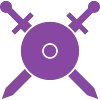Jouez à Big Monster ou à 1048 autres jeux en ligne.
Sans téléchargement, directement depuis votre navigateur.
Avec vos amis et des milliers de joueurs du monde entier.
Gratuitement.
Dernière mise à jour
Dear players, a new arena season has started and some options changed for Big Monster:
| Previous season | New season |
|---|
| Hide live scores | Yes | No |
Voir plus

Défiez
les meilleurs joueurs du monde
Devenez le prochain champion de
Big Monster
Aucun lien n'est disponible.
Ajouter un nouveau lien vers une règle ici
[fr]
Vidéo Règles LudoChrono
Informations sur le jeu
Designer
Artiste
Éditeur
Année
Développé par
Nombre de parties jouées
Nombre de joueurs
Durée de la partie
Complexité
Stratégie
Chance
Interaction
Disponible depuis
Version
العربية
беларуская мова
български език
Brezhoneg
Català
čeština
Dansk
Deutsch
Ελληνικά
English
Español
Eesti keel
فارسی
Suomi
Français
Galego
עברית
Hrvatski
Magyar
Italiano
Bahasa Indonesia
日本語
한국어
Lietuvių
Latviešu
Bahasa Malaysia
Nederlands
Norsk
Polski
Português
Română
Русский язык
Slovenčina
Slovenščina
Српски
Svenska
ไทย
Türkçe
Українська мова
Tiếng Việt
中文 (漢)
中文 (汉)



